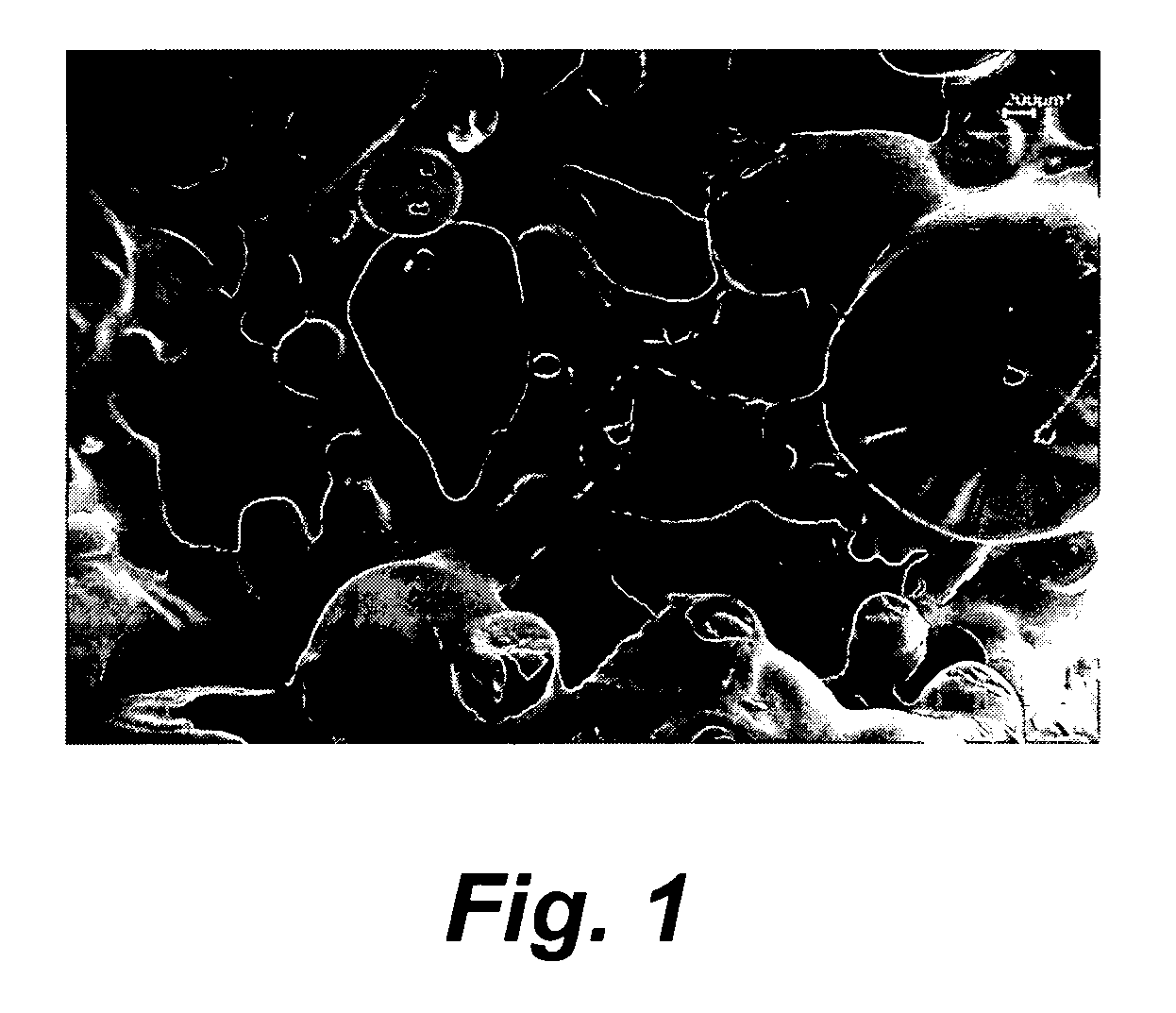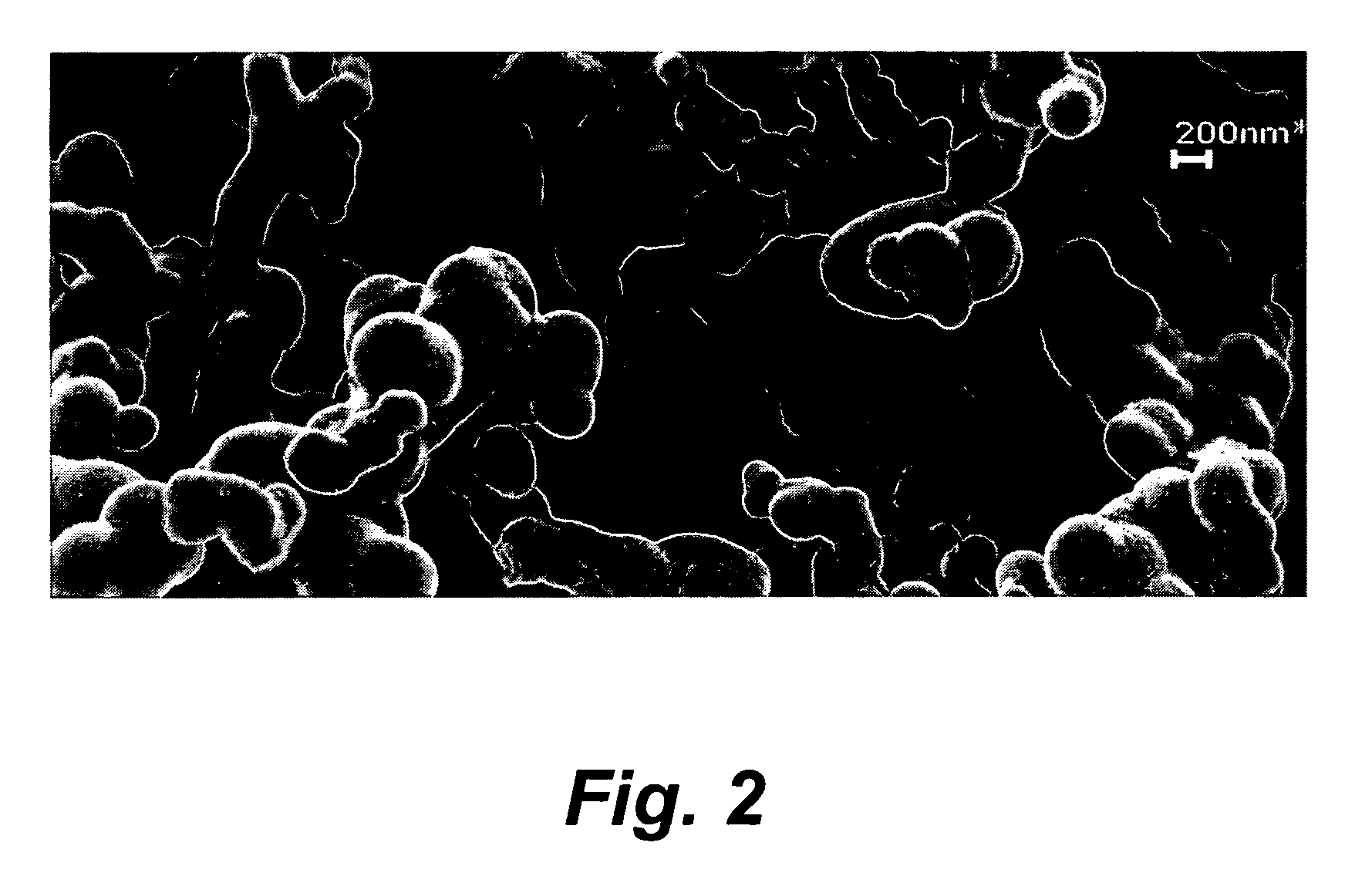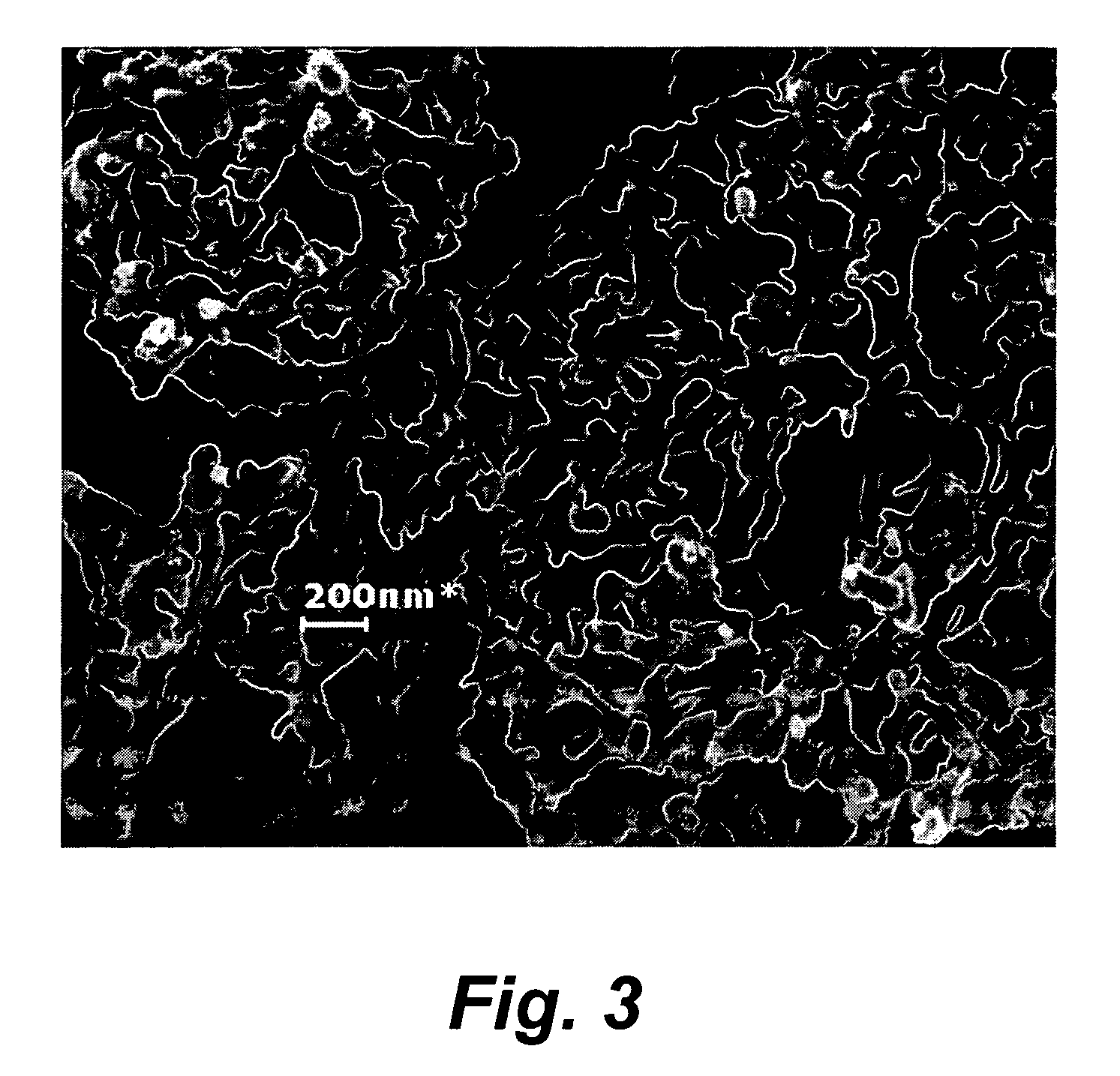Preparation of high nitrogen compound and materials therefrom
a high-nitrogen compound and compound technology, applied in the field of high-nitrogen compound, can solve the problems of poor thermal stability, extremely sensitive compounds with polyazido groups to spark, and limited application of these types of compounds
- Summary
- Abstract
- Description
- Claims
- Application Information
AI Technical Summary
Benefits of technology
Problems solved by technology
Method used
Image
Examples
example 1
[0031]Synthesis of 4,4′,6,6′-tetra(chloro)hydrazo-1,3,5-triazine (1). 4,4′,6,6′-tetra(chloro)hydrazo-1,3,5-triazine (1) was synthesized as described by P. Loew and C. D. Weis in Journal of Heterocyclic Chemistry 1976, 13, pp. 829–833, hereby incorporated by reference. The crude product was extracted with acetonitrile for 2 hours and filtered to remove an insoluble by-product. The acetonitrile was removed by rotary evaporation at room temperature, and the dried product was stored in the freezer to avoid its further decomposition. 1H NMR (DMSO-d6) δ 10.59 (s, 2H); 13C NMR (DMSO-d6) δ 168.31, 169.58, 170.28.
example 2
[0032]Synthesis of 4,4′, 6,6′-tetra(hydrazino)-hydrazo-1,3,5-triazine (2). A solution of 4,4′,6,6′-tetra(chloro)hydrazo-1,3,5-triazine (3.28 g, 10 millimoles) (1) in acetonitrile (200 ml) was prepared and cooled to 0 degrees Celsius. A solution of hydrazine (1.93 g, 60.2 mmol) in acetonitrile (10 ml) was also prepared. The hydrazine solution was added to the cold solution of compound (1) with vigorous overhead stirring. After the addition, the resulting mixture was refluxed for 2 hrs, then cooled to room temperature. The mixture was filtered, and the damp filter cake was washed thoroughly with water and air dried to yield 3.02 g (97%) of 4,4′,6,6′-tetra(hydrazino)-hydrazo-1,3,5-triazine (2) as a white solid. Compound (2) decomposes rapidly at a temperature of 293 degrees Celsius, as determined by DSC. Compound (2) was also analyzed by NMR and IR spectroscopy and by elemental analysis. The data are as follows: 13C NMR (DMSO-d6 / DCl / D2O) δ 164.89, 165.36, 167.66. Elemental analysis cal...
example 3
[0033]Synthesis of 4,4′,6,6′-tetra(azido)hydrazo-1,3,5-triazine (3). To a jacketed beaker containing 40 ml of 3.5 M HCl was added 4,4′,6,6′-tetra(hydrazino)-hydrazo-1,3,5-triazine (0.5 g, 1.61 mmol) (2) and the resulting suspension was stirred until compound (2) completely dissolved. The resulting solution was cooled to a temperature of about −5 degrees Celsius, after which a solution of NaNO2 (1.33 g, 19.27 mmol) in water (10 ml) was added with vigorous stirring while the temperature of the mixture was kept below 3 degrees Celsius. A few drops of ethyl ether were also added in order to control the foaming that occurred during the addition. The pale yellow crude product was re-crystallized from acetonitrile to yield 0.5 g (87%) of 4,4′,6,6′-tetra(azido)hydrazo-1,3,5-triazine (3). Compound (3) does not melt, but rather starts to undergo fast decomposition at a temperature of 202 degrees Celsius, as determined by DSC. Compound (3) was also analyzed by NMR and IR spectroscopy and by el...
PUM
| Property | Measurement | Unit |
|---|---|---|
| melting point | aaaaa | aaaaa |
| melting point | aaaaa | aaaaa |
| pressure | aaaaa | aaaaa |
Abstract
Description
Claims
Application Information
 Login to View More
Login to View More - R&D
- Intellectual Property
- Life Sciences
- Materials
- Tech Scout
- Unparalleled Data Quality
- Higher Quality Content
- 60% Fewer Hallucinations
Browse by: Latest US Patents, China's latest patents, Technical Efficacy Thesaurus, Application Domain, Technology Topic, Popular Technical Reports.
© 2025 PatSnap. All rights reserved.Legal|Privacy policy|Modern Slavery Act Transparency Statement|Sitemap|About US| Contact US: help@patsnap.com



